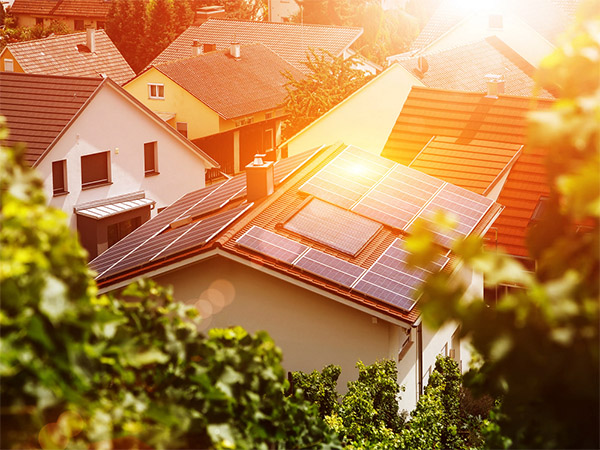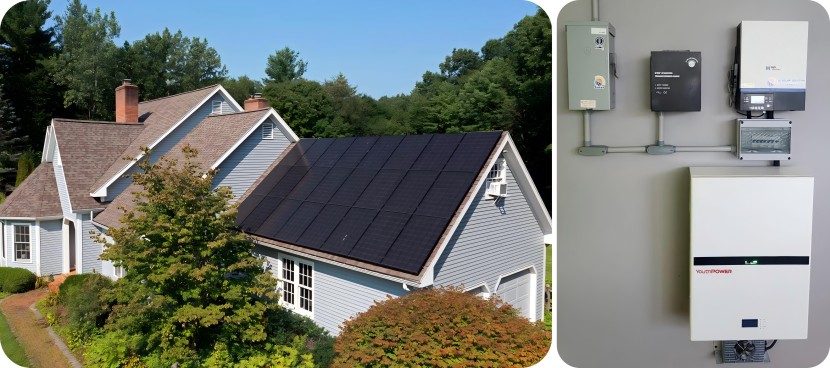Connecting a solar panel battery to an energy storage inverter is a crucial step towards achieving energy independence and reducing reliance on the grid. This process involves several steps, including electrical connections, configuration, and safety checks. This is a comprehensive guide that outlines each step in detail.
First, you will need to choose a suitable solar panel kit with battery and inverter.
|
Solar Panel |
Ensure that your home solar panel is compatible with your home battery storage system and can provide enough power to meet your household's needs. |
|
Energy Storage Inverter |
Select a battery inverter that matches the voltage and power of the solar power panel. This device regulates the current from residential solar panels to the solar panels battery backup and converts stored DC electricity into AC electricity for household appliances. |
|
Ensure that the battery storage capacity and voltage for solar panels meet your requirements and are compatible with the solar panel battery charger. |

Secondly, it is necessary to gather the required tools and materials, including electrical wiring (appropriate cables and connectors), various tools such as cable cutters, strippers, electricians' tape, etc., as well as a voltmeter or multimeter for voltage and connection testing.
Next, select a sunny location for installing the solar energy panels, ensuring that the installation angle and direction are optimized to maximize sunlight reception. Securely fasten the panels to the support structure.

Thirdly, in accordance with the instructions for the battery backup inverter, establish a connection between the house solar panels and the solar power inverter for home. It is necessary to locate two main connection terminals on the energy storage inverter: one being the solar input terminal and the other being the battery connection terminal. In most cases, you will need to separately connect both positive and negative wires of the solar panels to the input terminal (identified as "Solar" or similarly marked).
Moreover, it is essential to ensure a strong and accurate connection by linking the “BATT +” terminal of the energy storage inverter to the positive terminal of the lithium battery backup for solar panels, and connecting the “BATT -” terminal of the inverter to the negative terminal of the battery pack for solar panels. It is crucial that this connection adheres to both technical specifications and requirements outlined by the solar battery inverter and solar panel battery pack.
Finally, before starting to use it, you need to check all connections for correctness and ensure there are no short circuits or poor contacts. Use a voltmeter to measure the voltage in the solar battery storage system and make sure it falls within the normal range. Adjust the necessary settings (such as battery type, voltage, charging mode, etc.) according to the instructions provided by the solar power inverter.
In addition, regular inspections should be conducted on the cables and connections to ensure they are not worn or loose. Furthermore, it is crucial to regularly monitor the status of the solar panel batteries to ensure they are operating within normal ranges.
- Please Note: Before making any electrical connections, make sure to disconnect the power supply and follow all safety regulations. If you are unsure about how to make the connection or set up the solar battery backup system, consider seeking the help of a professional electrician or solar system installer.

Once you have everything set up correctly, you'll be able to enjoy clean, renewable energy from your own backyard. With proper maintenance and care, your new home energy storage system should last for many years and help reduce both your carbon footprint and monthly utility bills.
